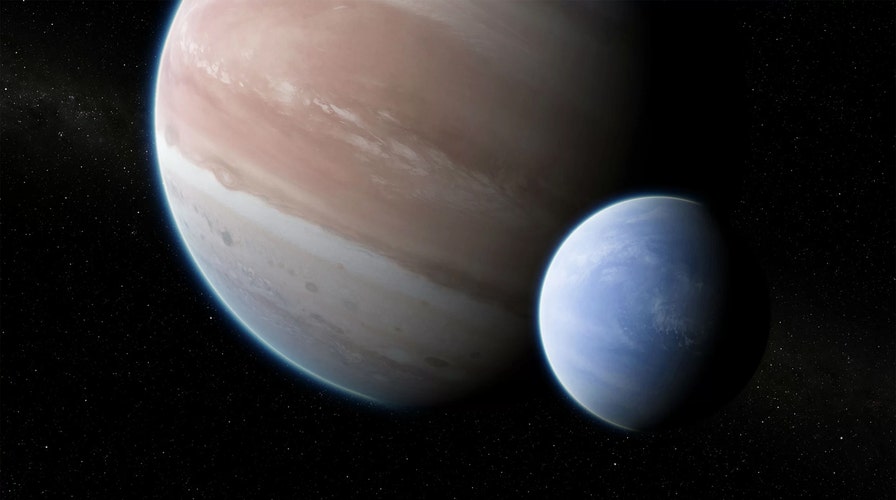Fox News Flash top headlines for June 26
Fox News Flash top headlines are here. Check out what's clicking on Foxnews.com.
Experts have discovered more than 4,000 exoplanets, but an exomoon has yet to be definitely discovered, despite the 2018 announcement there was something orbiting Kepler-1625b.
But now, researchers believe they may have discovered the presence of six exomoons orbiting six distant planets.
The study notes that these six exoplanets have orbits that are disturbed by what is believed to be celestial satellites.
DARTH VADER'S BIRTHPLACE FOUND? EVIDENCE OF DANGEROUS VOLCANO, LAVA WORLD SPOTTED IN DEEP SPACE
“We can say these six new systems are completely consistent with exomoons: their masses and orbits are such that they would be stable; they would be small enough that their own transits wouldn’t be seen; and they reproduce the pattern of [transit timing variations] seen throughout the entire Kepler data set,” the study's lead author, Chris Fox, said in a statement.
However, the technology to confirm them with direct imaging is not available, so "that will have to wait for further advancements," Fox added.
The researchers looked at data from NASA's now-retired Kepler Space Telescope with the exoplanets ranging between 200 and 3,000 light-years from Earth. A light-year, which measures distance in space, is approximately 6 trillion miles.
Though not confirmed, the likely existence of the exomoons was spotted after they were influenced by the planet they orbit, according to Paul Wiegert, co-author of the study.
EXOMOONS COULD BE HOME TO EXTRATERRESTRIAL LIFE, RESEARCHER SAYS
“These exomoon candidates are so small that they can’t be seen from their own transits. Rather, their presence is given away by their gravitational influence on their parent planet,” Wiegert said.
The research has been posted to the arXiv repository but has yet to be peer-reviewed.
According to Space.com, there could be as many as 100 exoplanets that have exomoons. By comparison, there are more than 150 moons for just the eight planets in the Solar System, according to data compiled by NASA.
In June 2019, one researcher suggested that exomoons could contain liquid water and therefore, support life, citing the heat they could generate because of "the gravitational pull of the planet they orbit."





















